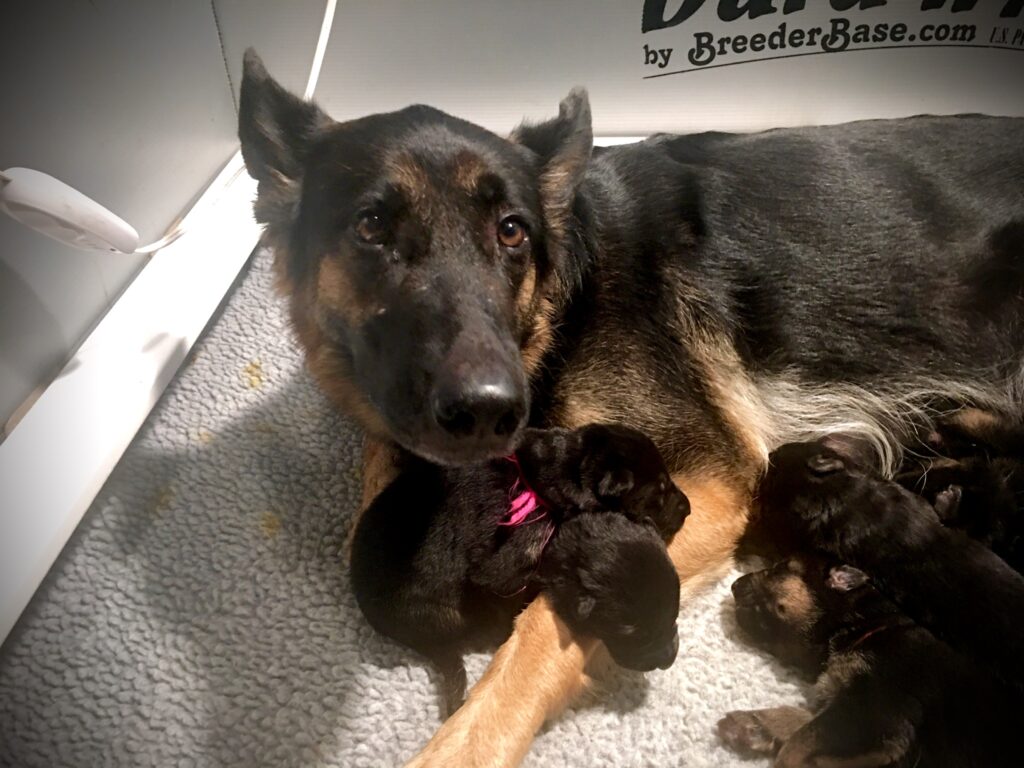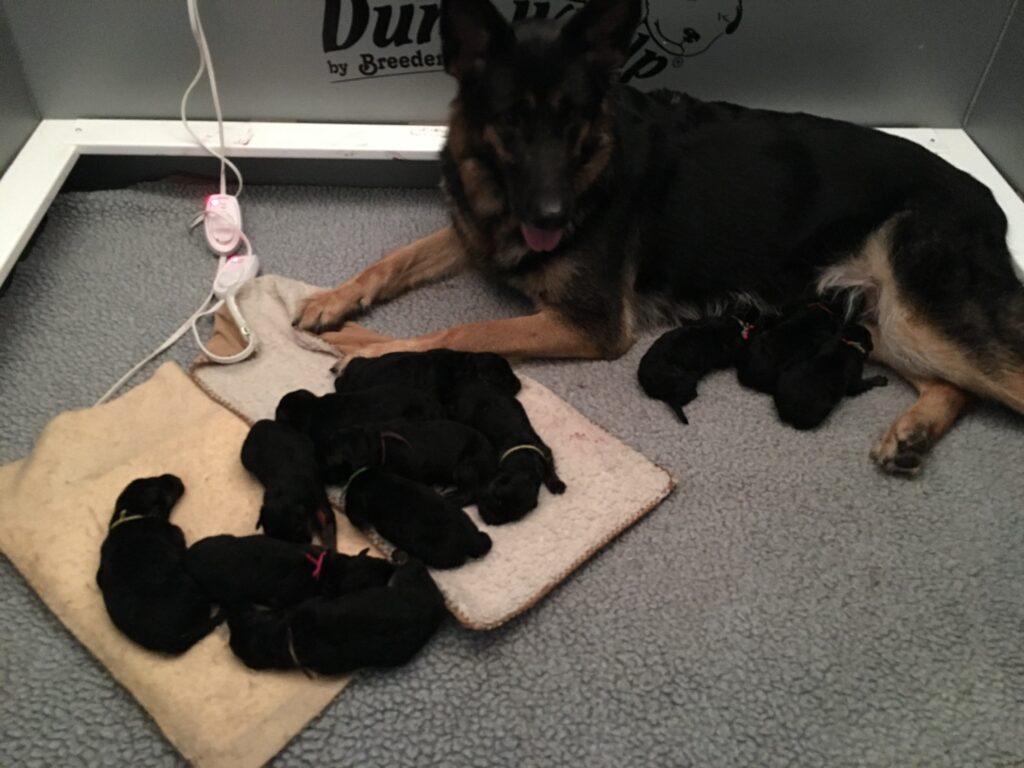One of our goals for 2022 is focus on the many positives of breeding, and helping as many breeders and breeder curious people as possible. To that end we are starting the year considering how to prepare for that most exciting, and stressful, first litter. I hope you will join us on this year long journey exploring many of the practical facets of breeding.
One thing is certain, we cannot have the dogs we love, and need, without responsibly producing them. We cannot fulfill the needs of dog lovers to own the healthiest, most well adjusted, companion dogs or preserve our historic and important breeds without our breeder skill, talent, and work effort.
So, here you are, embarking on what I hope will be a lifelong journey into the world of dog breeding. Ideally you are fully prepared in the basics of how to build a responsible breeding program, have selected, raised, and trained your foundation dog(s) who have now completed all necessary health testing and whatever optional pre breeding requirements you have for them (ie titles, accomplishments, work credentials, etc). Your foundation female is bred and confirmed pregnant and you are getting ready for the arrival of the puppies.
First a word of warning and a disclaimer: This information is for educational purposes only and is not intended to replace working closely with your veterinarian on the care of your dam and puppies. There are many potentially fatal things that can go wrong during pregnancy, whelping, and gestation. Puppies can become unwell and die in an instant. Always work closely with your veterinarian!
A complete whelping kit and a whelping box are the “core” items anyone needs to deliver a litter in a safe and clean manner. Below you can find visual and printable PDFs with some basic whelping items, you can also find a list of items available on Amazon in my Whelping Supplies Idea List, I will try to keep this list (it’s an affiliate list, so yes, we might make a few cents if you purchase something from the list, but you won’t pay more) updated with as many of the items listed below as possible to optimize your shopping time. You can also follow my main Amazon Profile to find all my dog lists. Many of the items are available at your local box box store or feed store as well. Be sure to visit the Revival Animal Health website for an abundance of whelping supplies, blogs and they also have an excellent You Tube channel and their own list of helpful whelping supplies.
The whelping box is a vitally important piece of equipment for the breeder. The design of the whelping box will vary considerably based on the size of the dam, so we will be discussing German Shepherd sized dams. If you have a toy or giant breed ask in a breeder group what those breeders us and like.
For decades (two actually) I used a simple wooden square (4×4 feet) and this was perfectly adequate. This box cost me less than fifty dollars, was easy to clean, and worked well.

A simple wooden whelping square is a great option for many breeders.
Pros:
1. Inexpensive to construct.
2. Easy to customize to fit your space.
3. Can be easy to store.
Cons:
1. Heavy.
2. Needs to be constructed.
3. Can be difficult to store.
4. Low sides require higher sides to hold in warmth, privacy, etc.
5. Can be very hard to sanitize and clean, even when well sealed.
6. No bottom, so a bottom must be provided to contain mess.
7. Puppies will climb out sooner, around 2 to 3 weeks.
Our current box is a Durawhelp, this box is larger by nearly 2 feet and has several nice features. It’s very light, being made of corrugated plastic, folds up easily and stores in the box it came in right under my queen size bed. The box has a bottom of the same material, so my floors are protected, there is premade bedding I use for the top layer, easy to remove and clean pig rails, and a hop out for the dam. I enjoy how easy to clean it is, and the high sides help hold in warmth. This box was a nice upgrade and after nearly ten years of use it’s still in excellent condition. There are a wide variety of whelping box brands and styles, one of the most popular is to modify PVC Flower/Garden beds from Costco! So, spend some time in breeder groups asking what other breeders us, especially those with dogs of similar size to yours, before you purchase a high dollar box. Other popular boxes are: Jonart, EZ Whelp, just to name a couple.

Andeigh getting ready to whelp. 
The box set up and nearly ready. 
A large box means a person can easily sit with the whelping dam. 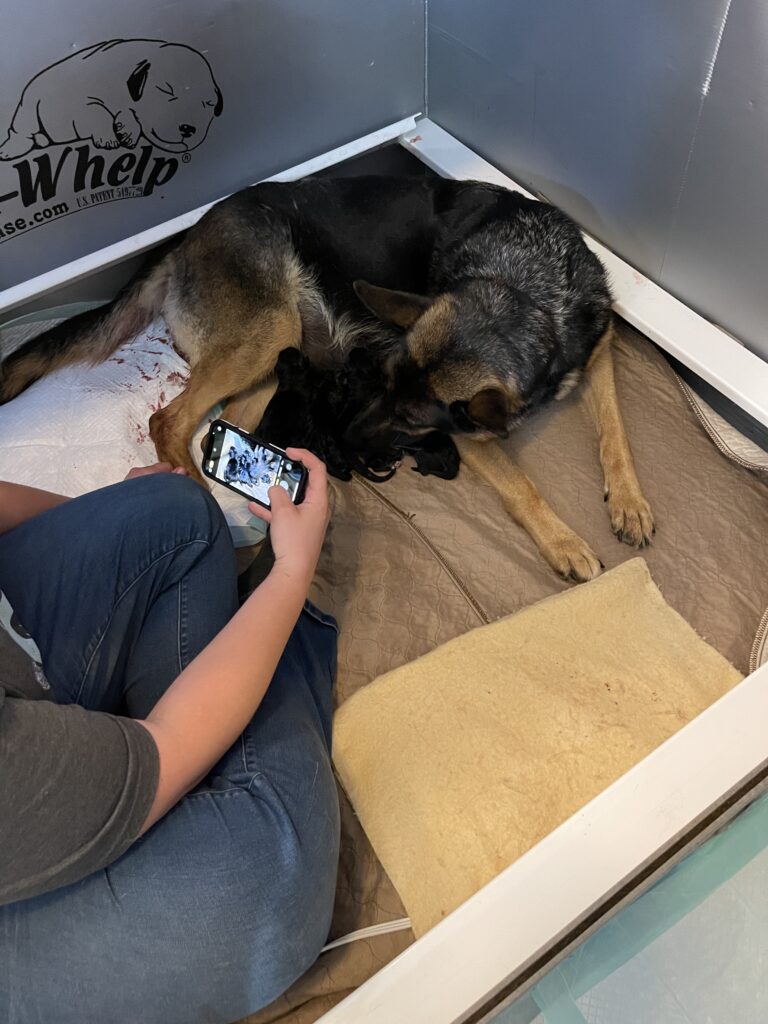
EZ whelp pad, and disposable pad catch whelping fluids. 
After whelping disposable pads can be used for the most copious discharges. 
A dry erase board holds whelping times and collar colors. 
A small bottle and “premie” sized nipple is perfect for GSD neonates. 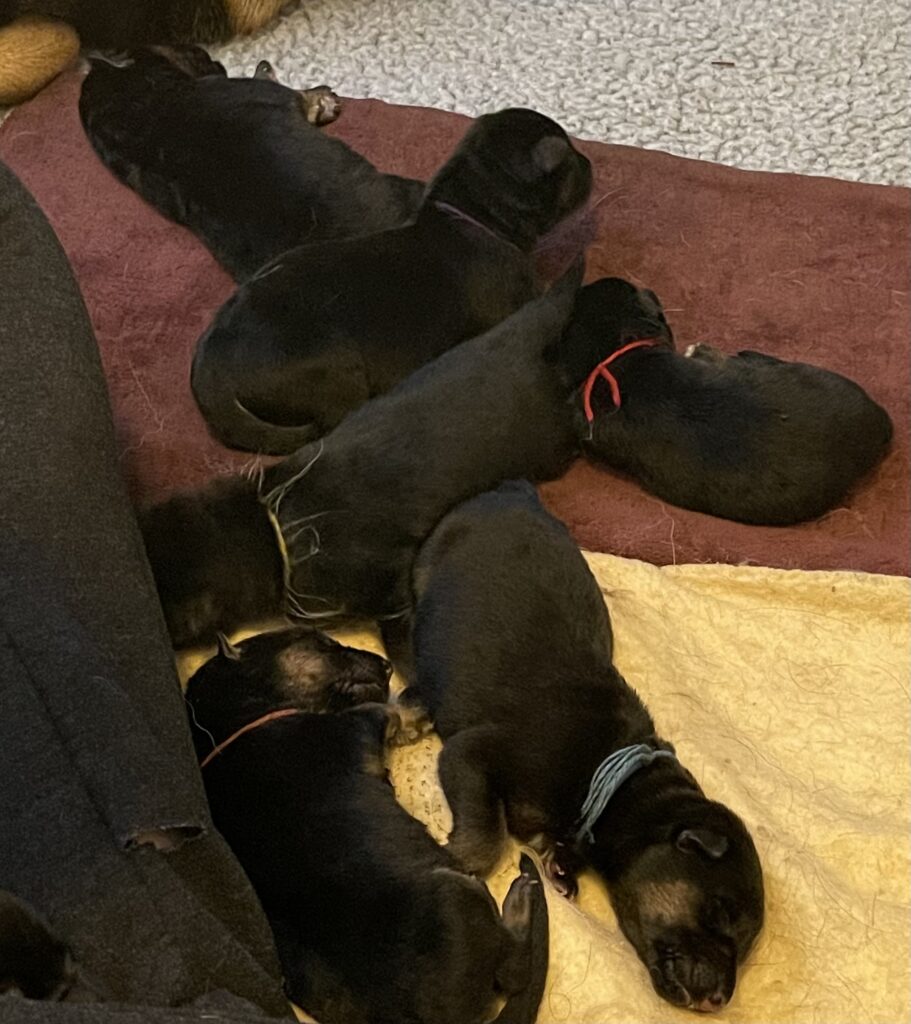
Two heating pads for this large litter. 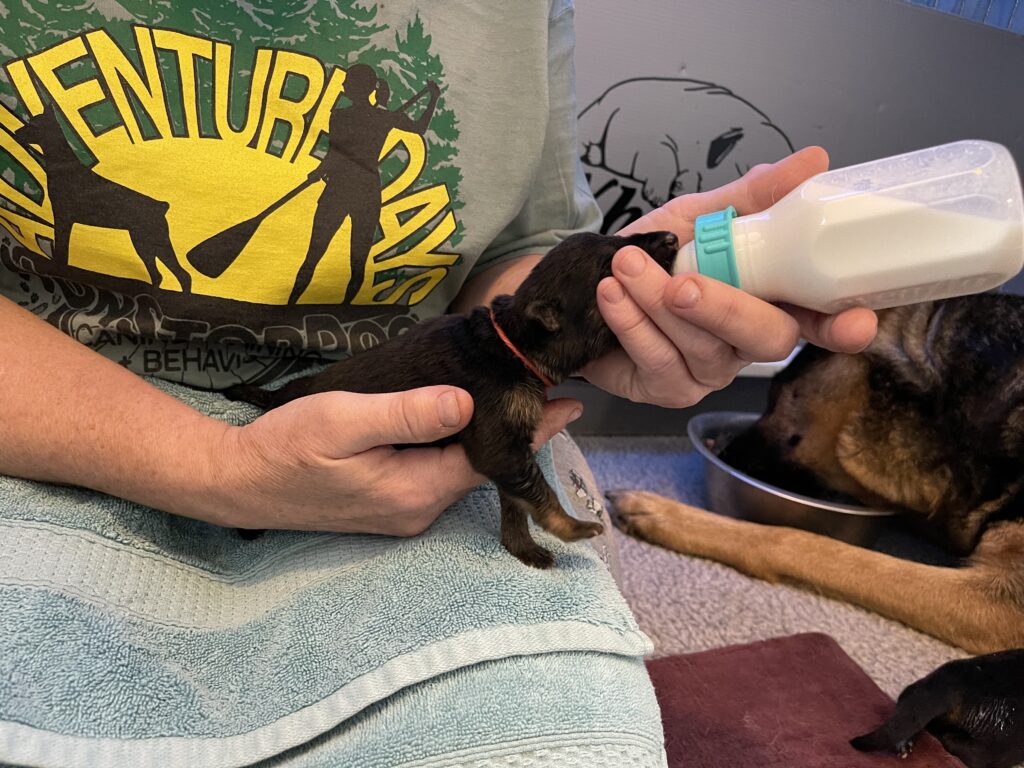

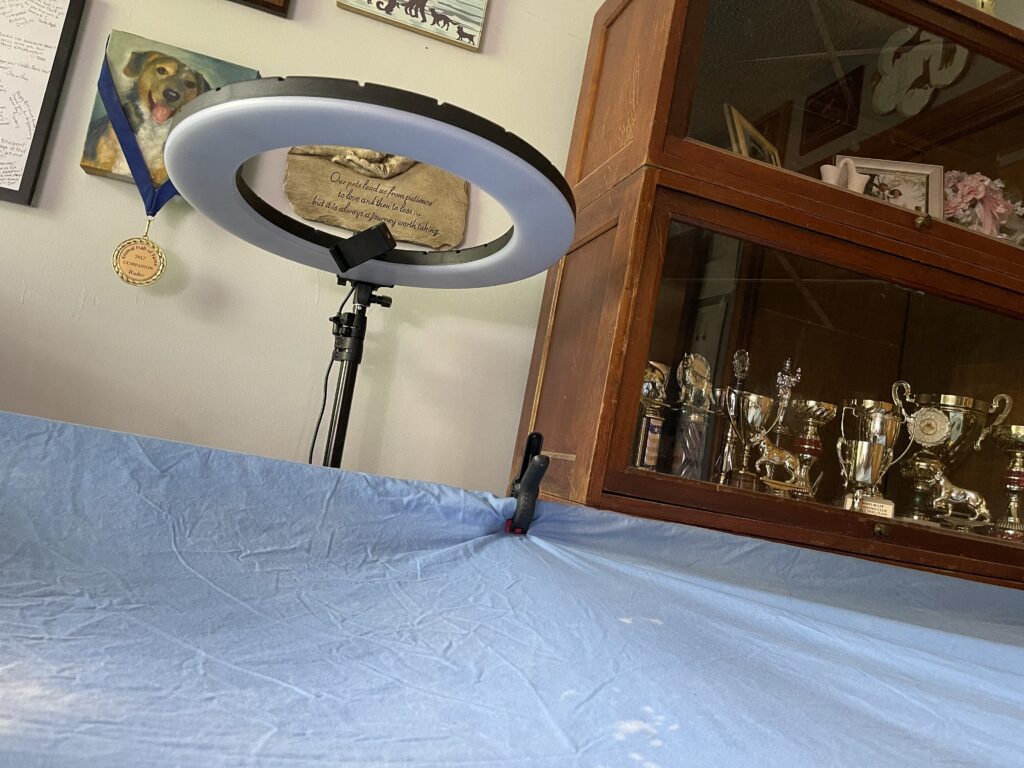
Ring light with remote was an expected luxury, I use this for every whelping now. 
Baby wipes are also nice to have on hand. 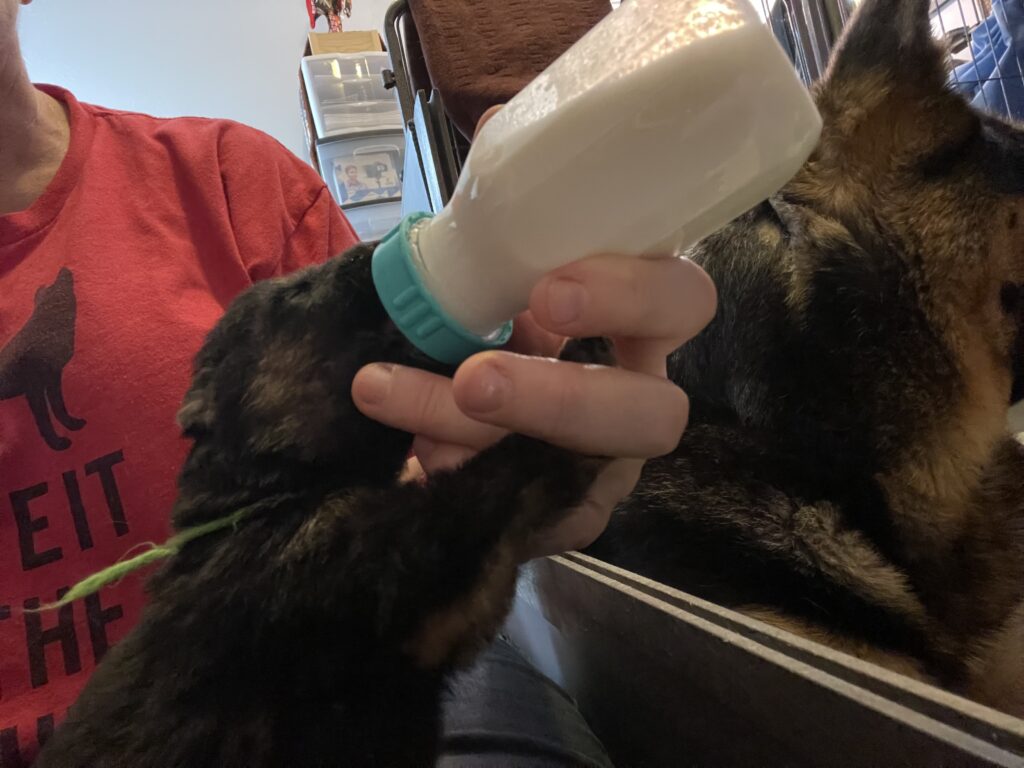
Be sure puppy’s head is higher than their belly when bottle feeding to avoid air being ingested. 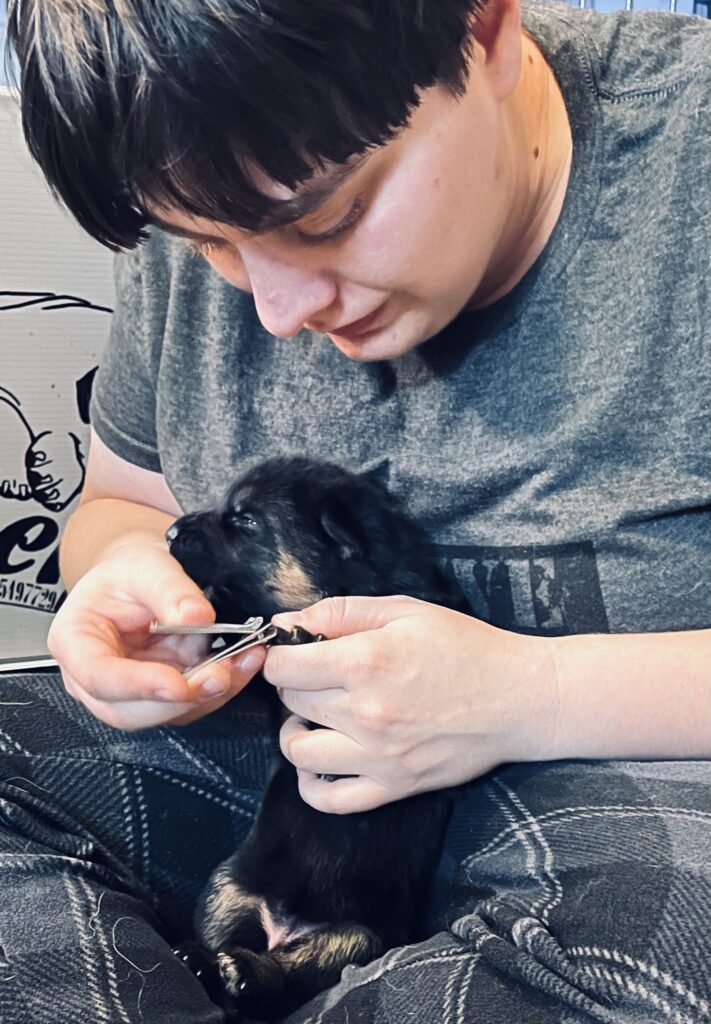
Human fingernail trimmers are suitable for puppies up to send home age. 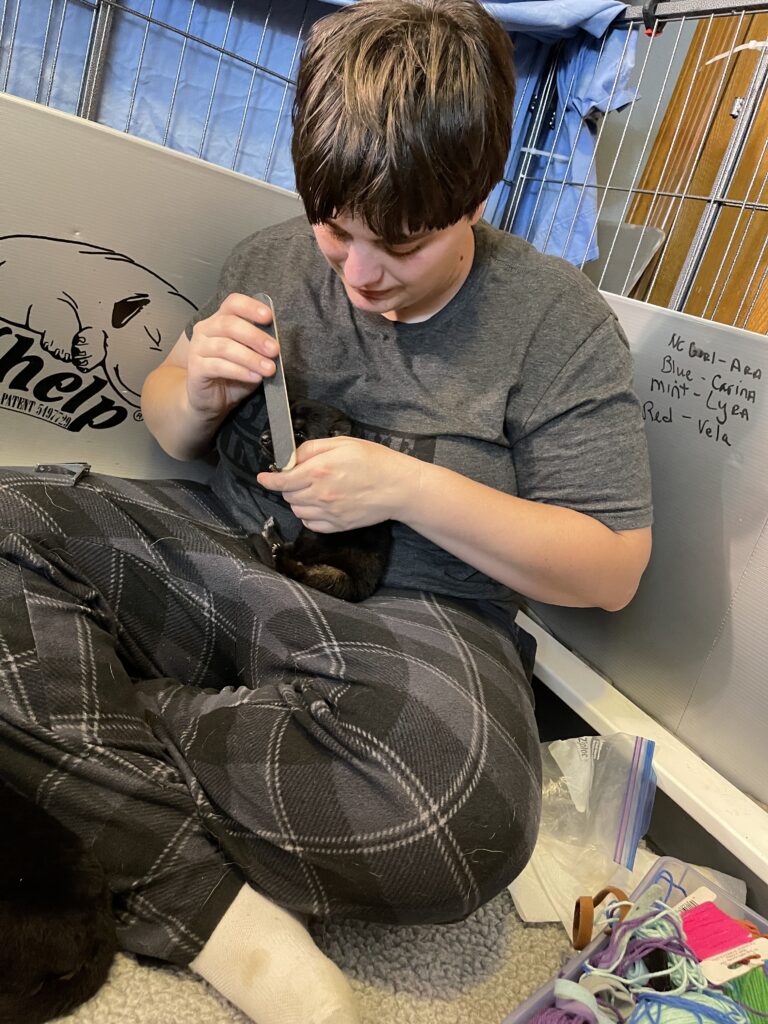
A nail file (soft) help smooth nail tips and protect the dam’s breast from scratches. 
A larger box means even as the puppies grow the dam can still easily lay fully out. 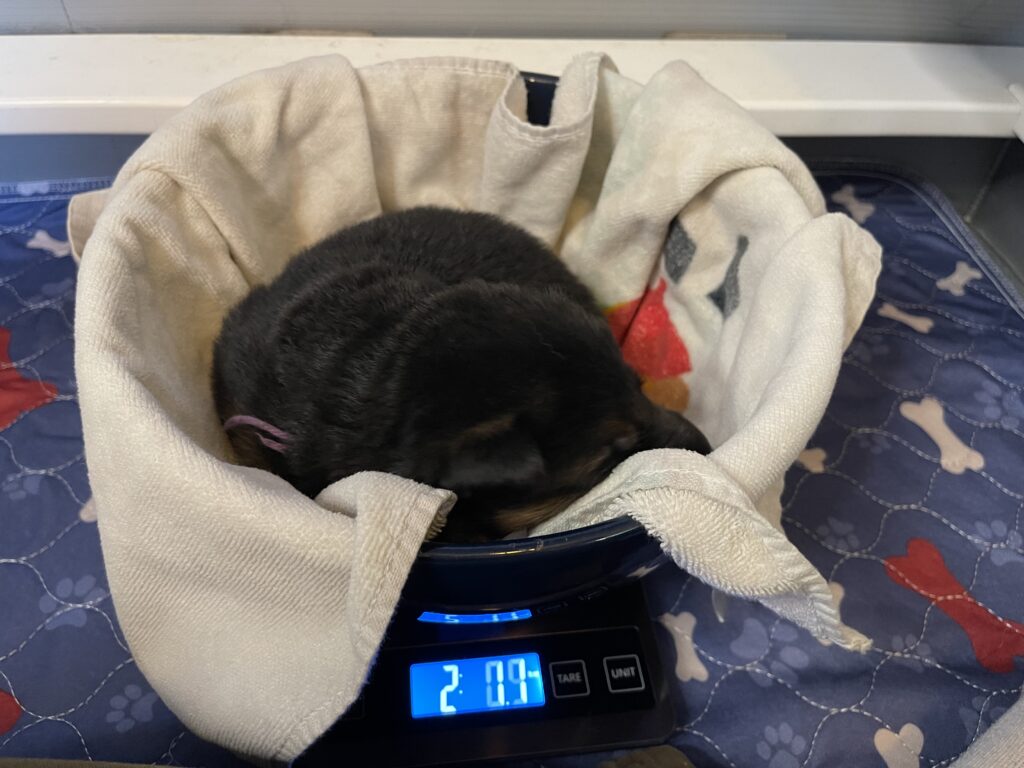
A food scale is a nice addition. 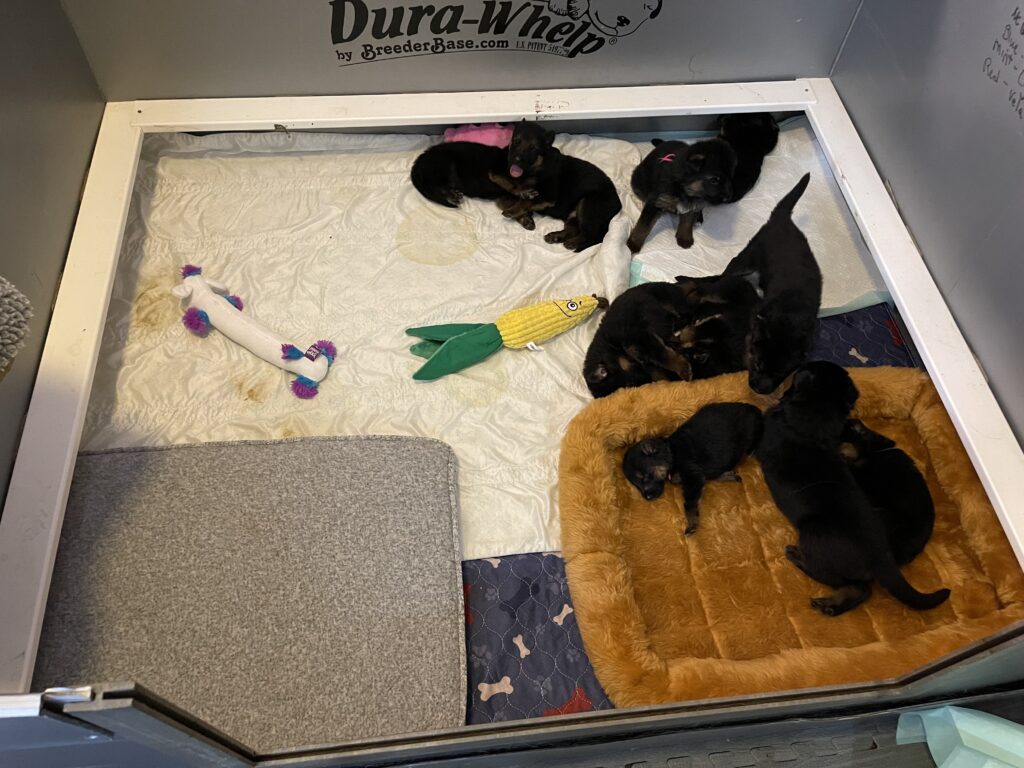
The larger box means my 3 week old puppies can have a resting and toilet area. 
Small beds are safe for older puppies. 
Using dry erase markers we can write notes directly on the durawhelp. 
With this large litter we removed the whelping box at week 3 and left the pen. 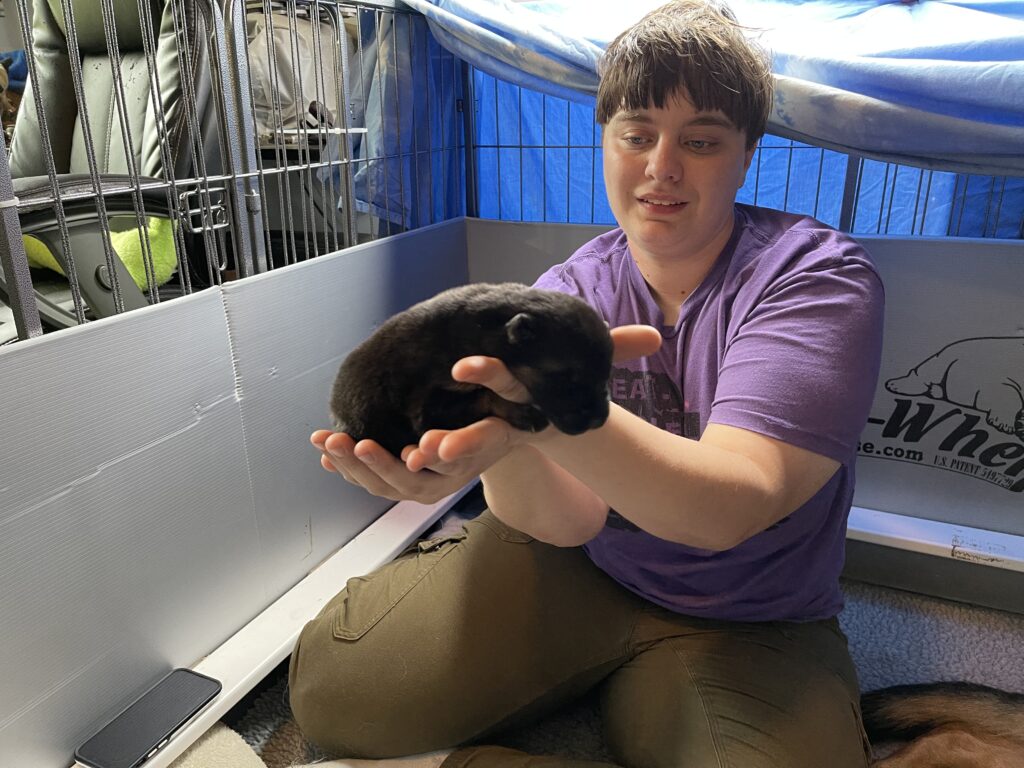
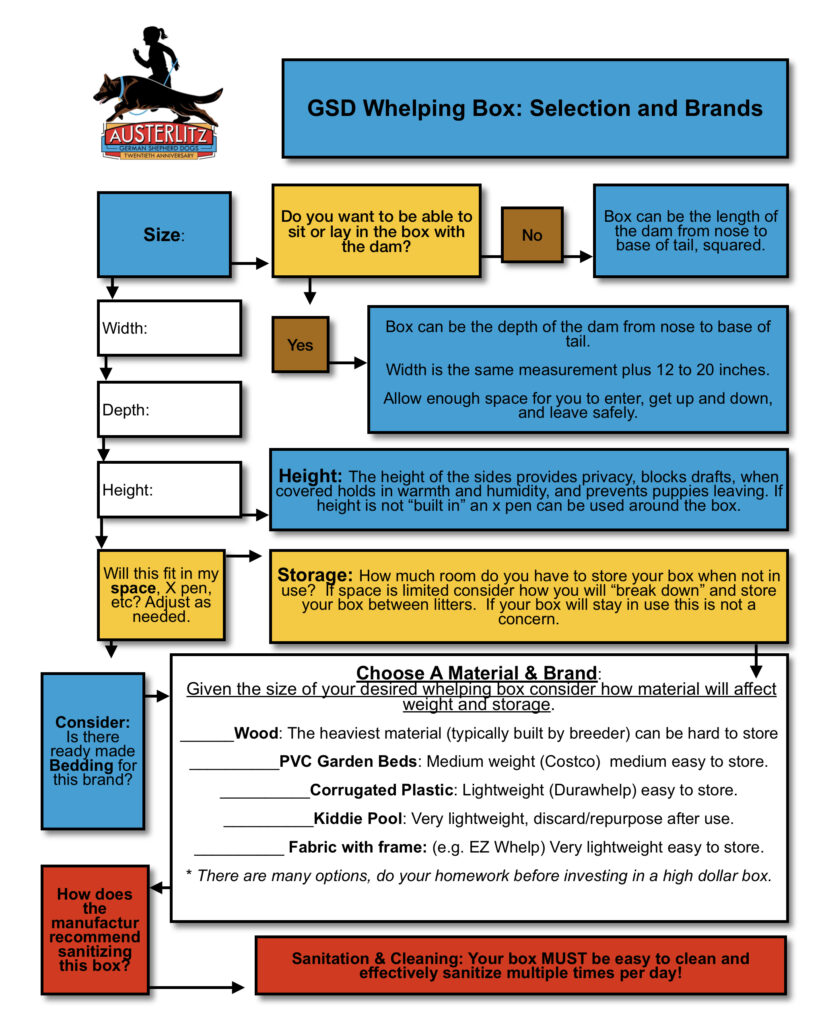

After a place to have her puppies, the next thing the breeder will need to consider is a whelping kit to help the dam safely deliver her puppies. For a low risk whelping from a robust breed you may find a few items are used most often. Every whelping I use: a rectal thermometer, rags and towels, a bulb syringe, hemostats, umbilical scissors, unflavored wide dental floss, and a heating pad. These are the tools I need to clean up the puppy, clear the airway, dry and warm the puppy, and clamp, tie, and cut the cord. So, these are the most important tools in my kit.
I also have supplies that I rarely use, but like to have on hand for emergencies or urgent use. Once such example is keeping sterile bandages and a baggie on hand just in case a puppy is born with it’s intestinal organs outside the body, something most breeders may never encounter, but if you do encounter this you will be glad for having the appropriate wrappings on hand to transport the puppy to the nearest ER or your vet for surgery. Breeder groups are a good place to inquire among breeders what items they find most useful and what they like to have for unexpected things.
I keep my kit in a small storage tub made for craft supplies, but breeders use lots of different things, so find a storage container that fits your available storage space.
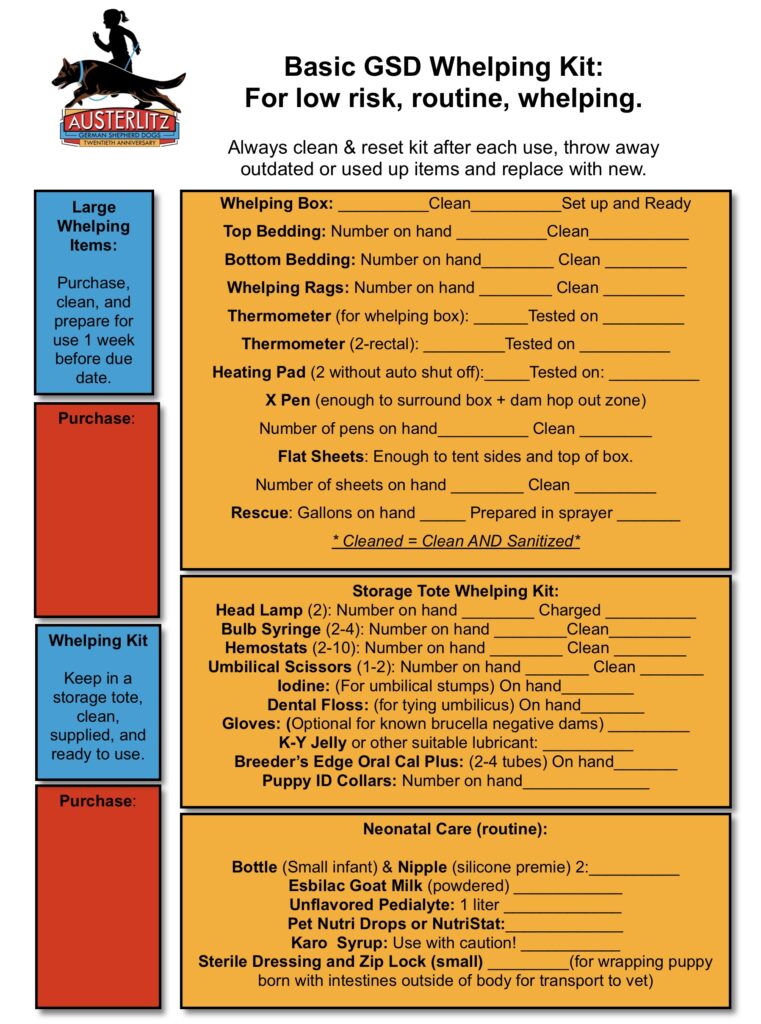
Once your puppies are born you are faced with neonatal care. Ideally your neonates will need nothing more than a warm, safe, environment and a skilled dam to thrive. But occasionally puppies require anything from a little help to emergency veterinary care. Having a few items on hand can mean the difference between survival or death for some puppies, so while it’s vitally important you are in contact with your veterinarian if a puppy fails to thrive or needs medical care, it’s also important to have a few items on hand to support puppies who may just need a little help. While there are many more neonate care options out there, from incubators, oxygen support, and tube feeding, we will not be touching on any of those options here. Instead we are just considering basic supportive care supplies (warmth, hydration, nutrition).


In my 30 years breeding German Shepherd Dogs, and whelping over 70 litters I have found the supplies listed here to be all I have needed for my At Home whelpings. As a new breeder nobody ever helped me figure out what basic items I needed, I learned through experience and self education. My hope is that by providing these supply lists you will have the equipment you need to have a successful whelping and healthy neonates.
If you want more detailed support Contact Us to schedule a breeder consultation.
You can also subscribe to our Newsletter, and listen to our brand new, soon to be released, podcast where we will be discussing in detail how to use these supplies, the basics of whelping a litter, and raising neonates.


